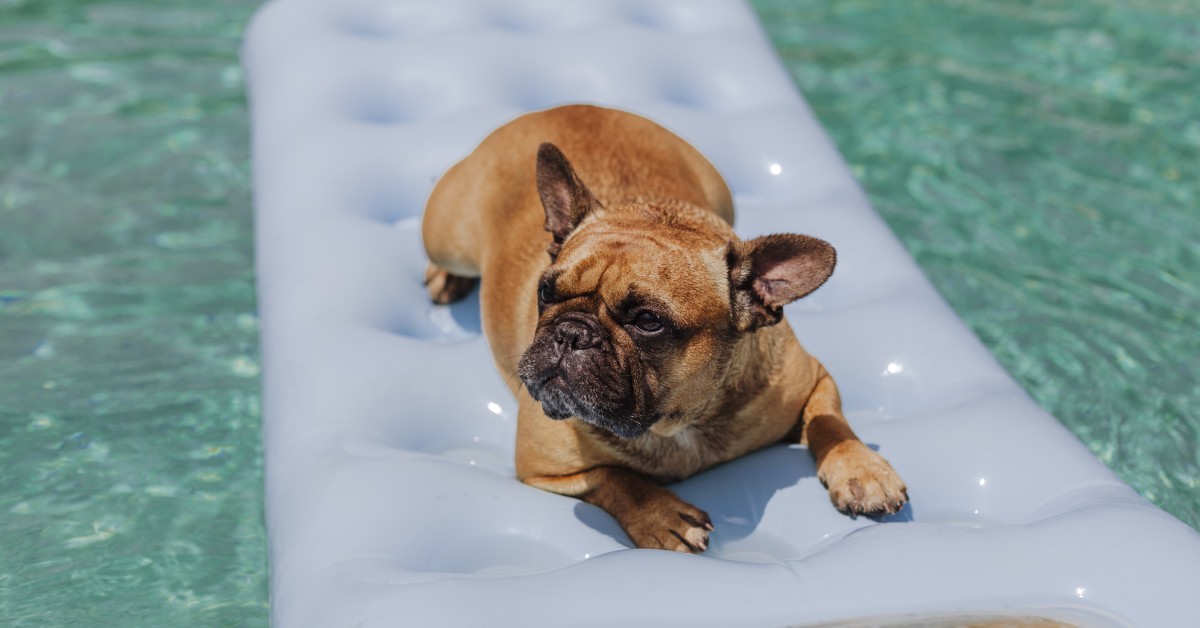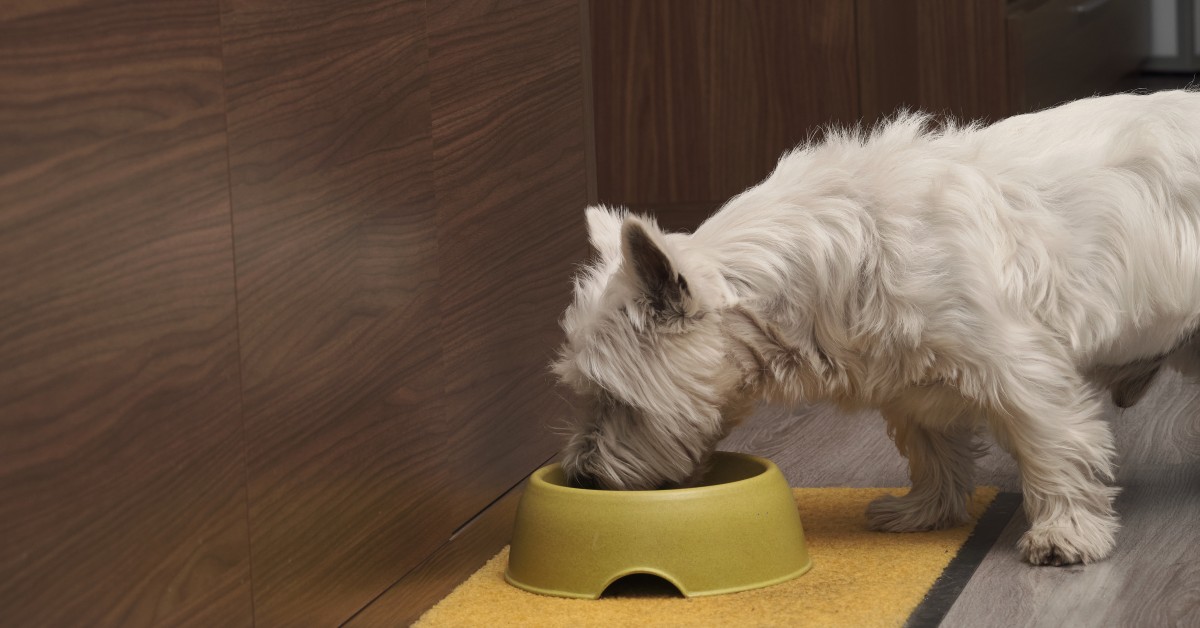Keep Your Dog or Cat Safe at the Pool
Before you take your pet swimming, study up on some pet pool safety tips.

If you want to take your pet swimming, you're doing the right thing by choosing a sanitized, temperature-controlled pool instead of a natural swimming hole. Even so, that innocent-looking private or public pool and its surroundings can harbor potential hazards that you need to be aware of to prevent poolside pet health issues and emergencies. Let's take a quick dip into some smart pet pool safety tips.
Give Your Pet Some Swimming Lessons
Some animals (especially dogs!) take to water instantly and appear to be natural swimmers. Others may flounder helplessly or even refuse to get into the water until they've had some pet swimming lessons. While you can find companies that offer swimming lessons for animals, you can also teach your pet the fundamentals yourself.
The first step involves simply getting your pet accustomed to wearing a life jacket and being in the water -- both of which you can practice in your own back yard. After putting the life jacket on your pet, fill a shallow kiddie pool with water and place the animal in it. If your pet is a cat, hold it gently while it gets used to the feel of the water. Gradually loosen your grip until your kitty is standing or wading confidently without assistance.
Before you and your pet can graduate from the kiddie pool to the real thing, brush up on some other training as well. You need to know that your pet can respond to commands such as "No" and "Come here." These commands will allow you to steer your pet away from the deep end of the pool until it knows not to venture out there. If your pet is big enough to use the poolside steps, show it where the steps are and how to use them safely.
Provide the Necessary Pool Safety Equipment
Not all pets are equally well equipped for swimming. For instance, short-legged and/or flat-faced pets may find it a struggle to stay afloat. Fortunately, you can help ensure cat or dog pool safety by purchasing life jackets and other pet flotation devices. These products are a smart investment even for pets who demonstrate strong swimming skills, just in case something happens to them that might interfere with those abilities.
If you own your own pool, you can add features to it for enhanced dog and cat pool safety. For example, if your pet has trouble getting in and out of the pool, you can install a little ramp to make things easier. A motion-sensitive alarm can alert you if your pet ventures into the pool without supervision. To eliminate this problem, attach a non-floating pool cover whenever the pool isn't supposed to be in use.
Don't Let Your Pet Drink the Water
Chlorine may offer important safety benefits by killing pathogens in pool water, but that doesn't mean your pet should use the pool as a giant watering bowl. Make sure your pet already knows how to respond to commands so you can discourage it from drinking pool water. If necessary, grab your pet and pull it away from the pool.
Even around a large body of water like a pool, your pet can experience dehydration unless you bring along a supply of chlorine-free drinking water. Pour this water into a bowl poolside so your dog or cat will have ready access to it at all times, refilling the bowl whenever the water level drops too low or the water gets undrinkably hot.
Know How to Prevent and Handle Pet Health Threats
Chlorine doesn't do your pet exterior any favors, either. This chemical can irritate the eyes and skin, while any water left in the ears can promote painful ear infections. When your pet has finished its pool adventure, rinse it off with clean water, then cleanse and dry the insides of the ears. If you plan on staying outdoors, apply some pet-friendly sunscreen to protect the skin against harmful UV rays.
Just as the sun's energy can burn an animal's skin, so can the heat it generates burn your pet's sensitive footpads. Bear in mind that the cement and tiles surrounding a pool can get searingly hot under the sun. If these surfaces feel too hot for your fingers, they're too hot for your pet's toes. In this situation, you should either fit your pet with protective booties or pick it up and carry it to and from the pool.
Even under the best of circumstances, an animal can suffer a medical emergency. Before that first swimming trip, learn how to administer pet CPR. If your pet is drowning, pull it out of water, lay it on its side, and pull its tongue forward while pushing on its chest to push water out of the lungs. Perform CPR if necessary, then rush your pet to an animal hospital for any further treatment it may need.
Some pets who inhale a little water go on to develop a condition called dry drowning. If your pet is coughing, wheezing, drooling, or emitting strange noises from its chest, take it to the animal hospital right away.
Follow these suggestions, and you can take your dog or cat to the pool without fear. Enjoy your aquatic fun together!
Ready to start saving money on pet wellness care?
Then take a look at Mint Wellness, the pet wellness plan that provides fast reimbursement on routine pet care. Save on vaccinations, wellness exams, preventatives, dental, and more!
Learn More


